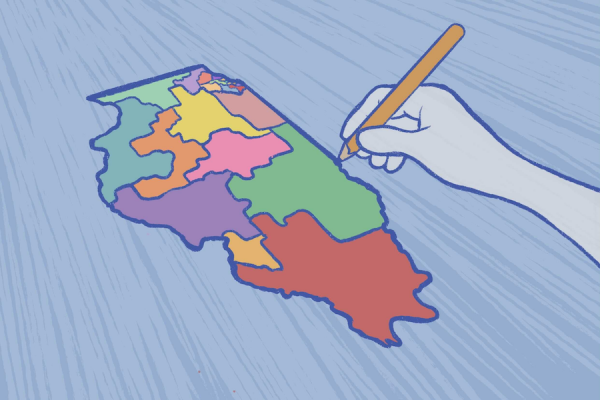When the Illinois General Assembly started its once-a-decade redistricting process, I sounded the alarm, saying that Black people had more to lose than any other group, given population loss in some of our districts. It turns out that I was right.
State lawmakers approved Friday the “Map that Dilutes the Black Vote,” and it awaits Gov. J.B. Pritzer’s signature.
During a recent House Redistricting Committee hearing, we learned from Chairwoman Elizabeth Hernandez, D-Cicero, that the Legislature restored at least four historically Black districts that lost population to their historical majority Black status.
But they refused to do that for House District 9, House District 10 and Senate District 5. These districts include Black communities like North Lawndale, East Garfield Park and West Garfield Park.
We have been asking the Redistricting Committee to restore these districts to their historic majority Black status since we started participating in the redistricting hearings in March.
We shared data that showed demographic shifts in the districts over the last 10 years. We also shared maps and data indicating that, in spite of population shifts, these districts could be restored to their historically majority Black status using a deviation of 4% – that is, creating a district that is 4% smaller than the remaining districts. This smaller district would have the same power and privileges as every other district in the state. This practice is permissible under the federal Voting Rights Act of 1964, to ensure that minorities can elect a candidate of choice.
The State Legislature hired a consultant to testify at the May 25th hearing. He seemed to suggest that we don’t need majority Black districts for Blacks to elect candidates of choice. He used President Barack Obama as an example.
As I have repeatedly explained to the Legislature, I don’t think we should take that chance. These districts include some of the state’s poorest communities on the west end, with some of the state’s wealthiest communities on the east end. They are undergoing rapid demographic change on the east end.
Over time, the likelihood of Black candidates from the poorest communities would be extremely challenged competing with more well-resourced candidates from the central and eastern sections of the district.
The Legislature went on to draw a map that had 15 majority Black districts. Ten years ago, the Legislature drew 16 majority Black districts. This is a reduction of one majority Black district from 10 years ago.
This action is justified by some by the fact that “Blacks have lost population.” The truth of the matter is the group that lost the greatest population in the state is white people, with a loss of over 500,000 people.
In spite of the fact the state has lost population over the past 10 years, the Black percentage of the state’s population has not changed. We were 14% of the state’s population in 2011, and we are 14% of the state’s population today. Why did we lose a majority Black district?
The UCCRO Unity Map, for which Illinois African Americans for Equitable Redistricting provided input, show it is possible to draw 19 Black House districts (out of 118 total) and nine Black Senate districts (out of 59 total), within the parameters of the federal Voting Rights Act of 1965 and the Illinois Voting Rights Act of 2011.
We shared our map and data with the Legislature as part of the public comment process, within the deadlines they gave us. It was apparent during the hearings that no one from the Legislature even reviewed our maps or data. In fact, judging from the comments made during the hearings, none of them had even seen the maps.
Valerie F. Leonard, a longtime North Lawndale resident, is founder of Nonprofit Utopia.
